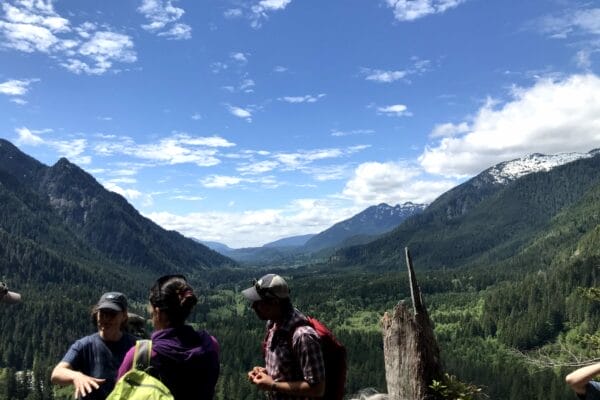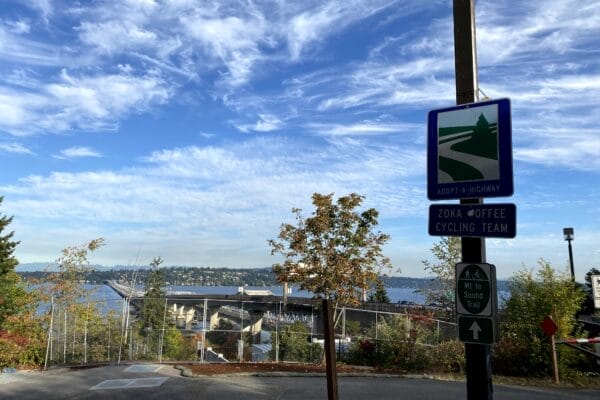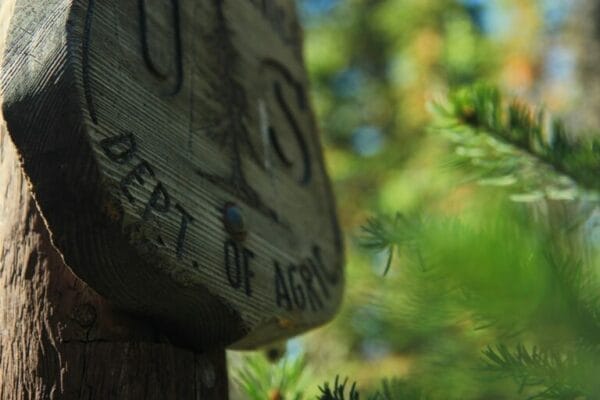Legislative Priorities 2021
Conservation across the nation
Federal: The Great American Outdoors Act and Land and Water Conservation Fund
The U.S. Congress made a historic investment in America’s public lands – an investment that will leave a positive legacy on American conservation for generations to come – with bipartisan passage of the Great American Outdoors Act in 2020, a bill that will permanently fund the Land and Water Conservation Fund (LWCF) and inaugurate the National Parks and Public Land Legacy Restoration Fund which will support deferred maintenance and repairs in national parks and forests.
Our work is not yet done. Here in the Greenway, we are working with the Okanogan-Wenatchee National Forest and Mt. Baker-Snoqualmie National Forest to support their maintenance project requests. We thank the U.S. Congress for appropriating this funding in the federal budget.
Read up on projects the Great American Outdoors Act may be funding in the Mountains to Sound Greenway National Heritage Area.
Learn more about the Great American Outdoors Act and the Land and Water Conservation Fund at work in the Mountains to Sound Greenway.
Contact your U.S. Senators and Representatives to say thank you for passage and implementation of the Great American Outdoors Act!
Protecting America’s Wilderness and Public Lands Act
H.R. 803 will take steps to conserve public lands and waters and protect communities from the effects of climate change. This legislation passed the U.S. House in February, and includes National Heritage Area Program, the Wild Olympics Wilderness and Wild and Scenic Rivers Act, and support for public lands across the country.
National Heritage Areas Program
National Heritage Areas tell America’s stories and conserve the nation’s cultural, natural, and historic resources. The Mountains to Sound Greenway National Heritage Area was designated in 2019, along with Washington’s other NHA, the Maritime National Heritage Area. As a member of the Alliance of National Heritage Areas, we strongly support National Heritage Area Program Legislation to ensure the future of these nationally-significant landscapes.
Learn more from the Alliance of National Heritage Areas
Legacy Roads and Trails Act
The Legacy Roads and Trails (LRT) Act leverages public and private funding to address water quality and access for threatened and endangered species like the Chinook salmon, bull trout, and steelhead. The LRT program focuses on addressing our national backlog of deteriorating infrastructure, and does so while protecting American rivers and streams, endangered fish, and community water systems with targeted projects.
Learn more from Congresswoman Kim Schrier.
REPLANT Act
Repairing Existing Public Land by Adding Necessary Trees Act or the REPLANT Act (HR 7843). This legislation will expand funding for the U.S. Forest Service (USFS) to carry out reforestation projects in U.S. forestland damaged by events such as wildfires, insects and disease, while creating more than 48,000 jobs over the next ten years.
Learn more from Congresswoman Kim Schrier.
Washington’s Public Lands
Washington State Department of Natural Resources (DNR)
Lands managed by the Washington State Department of Natural Resources provide millions of acres of forests that cleanse the air and water, recreation opportunities for all ages and abilities, jobs in the public and private sector, economic development for local communities, and essential revenue for local governments. Some of the state’s most heavily-used recreation areas are in the Greenway, such as Tiger Mountain, Mt. Si, Rattlesnake Mountain, and the Middle Fork Snoqualmie, and require an ongoing commitment to ensure ecological health and public safety in these spectacular places.
2021 Update: Good news! Community Forest Program funded at $16.3 million for 2021-2023, with $3 million going to the first acquisition of a new community forest on Cle Elum Ridge.
Community forests collaboratively improve habitat, safety, and sustainable recreation access, in partnership with tribal governments, land management agencies, and local community members.
Download a Teanaway Community Forest One-pager about how this support can create jobs, protect watershed and forest health, provide safe recreation, and support collaboration in the Teanaway Community Forest.
Read more in the legislative report from Washington Trails Association.
DNR Trust Land Transfer Program
Since 1989, the Washington State Department of Natural Resources’ Trust Land Transfer Program has enabled the State of Washington to spend more than $800 million to protect about 128,000 acres of state public lands for wildlife habitat, outdoor recreation, and other public benefits. But this vital program is at risk of being overlooked in this difficult budget year.
Join Conservation Northwest to sign on in support of funding for Trust Land Transfer program
Video: Support Trust Land Transfer
Washington State Parks
We strongly support ongoing maintenance funding and critical capital investments for our state park system. State Parks receive the highest use of any public lands across the state and serve as some of the most accessible outdoor experiences for all ages and abilities. It is critical that we fully fund operations to ensure ecological health and public health at these beautiful places throughout the state. Palouse to Cascades, St. Edward, Lake Sammamish and Olallie state parks are seeking important investments this year.
Read more in the legislative report from Washington Trails Association.
Palouse to Cascades State Park Trail, the east-west backbone trail connector through much of the Mountains to Sound Greenway, continues to secure much-needed improvements and maintenance. Read more from Washington Bikes about progress to connect this iconic trail.
Recreation and Conservation Office (RCO)
2021 Update: Good news! Washington Wildlife and Recreation Program (WWRP) funded at $100 million.
WWRP is the largest source of funding for recreation and conservation in Washington. Funding for this competitive grant program would provide matching funds for new local parks, farmland preservation, critical habitat protection, new trails, and water access projects across the state.
Read the news from Washington Wildlife and Recreation Coalition.
Active Transportation
Washington State Department of Transportation
Read more from Washington Bikes about active transportation successes this legislative session.
Eastrail
Built on a historic railroad line, the Eastrail runs 42 miles on the east side of Lake Washington, from Renton to Snohomish County, creating unique opportunities for the diverse communities and businesses of the Eastside. A fully connected Eastrail will increase access to East Link light rail and bus transit; increase access to parks and natural areas; help decrease carbon emissions; produce positive health outcomes for all populations; and boost economic growth.
The Eastrail is in a good position to receive funding for a connection to Gene Coulon Park and Southport in Renton, trail development on the I-90 Steel Bridge and historic Wilburton Trestle and nearby trail in Bellevue, and a new connector into Woodinville when the state legislature takes up a transportation package with new revenue sources.
Mountains to Sound Greenway Trail 
The official Mountains to Sound Greenway Trail will eventually connect Seattle, Mercer Island, Bellevue, Issaquah, Preston and Snoqualmie to create a continuous east-west route from urban areas to the Cascade foothills for both recreation and active transportation. The first phase of the “Bellevue Gap” is currently under construction from the I-90/I-405 Interchange heading east to 130th through the Factoria neighborhood. The next phase is a $33.9 million project to bring the trail to 150th Avenue.
$6.9 million for the next phase of this urban trail connection is proposed in 2021, and is in a good position to receive funding when the state legislature takes up a transportation package with new revenue sources.
Read more about this City of Bellevue capital project and critical active transportation link.





